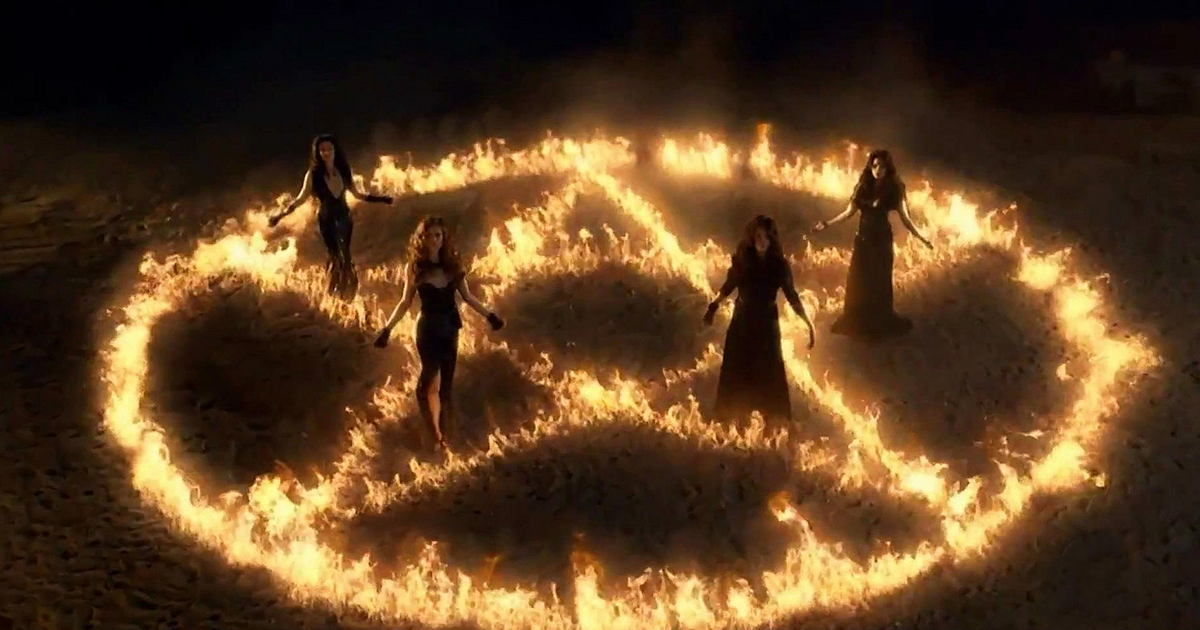
10 Things You Never Knew About Witches
1. Most of them weren’t
Say witch and people will think of a bad tempered old biddy with malevolent intent. But the bald fact of the matter is that most of those executed for witchcraft in England were just ordinary everyday folk who became the victims of scapegoating, neighbourly disputes or community bullying. Until she fell out with a neighbour who accused her, Ursula Kemp (Strange Magic) was the village healer, successful and respected.
2. Burn Witch Burn!
Contrary to images in popular culture most witches were not sentenced to burn to death. That was a crowd-pleaser used in Europe and Scotland. In England, plain old hanging was the most common form of execution.
3. Hocus Pocus
This concoction of archaic sounding words has long been associated with witches, magicians and magic. Conventionally it’s uttered over a spell or when bringing about some sort of change. However, there are some scholars who believe the term is derived from words spoken during the Catholic mass ‘hoc est corpus’, 'this is the body (of Christ).'
4. Talking to your cat could get you into trouble
Witchfinders were obsessed with discovering witch’s familiars. These were allegedly supernatural entities that would assist the accused in their practice. They often took the form of animals. So if you were caught chatting to one then you were probably a witch. Although poor and lonely Elizabeth Chandler of Huntingdon was thrown into jail for talking to a log and a stick.
5. The Swimming Test
A lot of people confuse the swimming test with the ducking stool. Witches were swum, scolds were ducked. Yes, the Seventeenth Century was a truly great time to be a woman. The swimming test usually involved tying the accused witch’s right thumb to her left big toe. If she floated, she was guilty for she had been rejected by water thought to be holy. If she sank (and probably drowned) then she would be innocent of witchcraft. What a consolation.
6. Witches didn’t wear pointy hats
Google ‘Seventeenth Century witch trials in England’ and you’ll see the women who pop up in the wood cuts and engravings are mostly depicted wearing close-fitting bonnets with the odd wide-brimmed hat thrown in. The only person shown wearing the now traditional black pointy hat was the Witchfinder General, Matthew Hopkins, the most monstrous of the lot. Is it possible that history has conflated him with his victims so that on Halloween along with our green make-up and black cloaks atop our heads we’re actually wearing his hat?
7. The Devil’s Mark – the witchfinders friend.
Fed up with a neighbour? Have a love rival you need to dispose of? Just accuse her/him of witchcraft and state s/he has the Devil’s Mark. For the Devil’s Mark was handy catch-all proof that the accused was a witch. It was allegedly the teat through which the witch could suckle their familiars (see point 4). Unfortunately, because it was demonic it could masquerade as a spot or a birthmark, a blemish or a scar, a fleabite or a mole or, basically any imperfection found on your body. Of course, if your body was flawless you had nothing to fear…
8. To move to trial a confession was needed without torture being involved
However, the resourceful witchfinders devised methods of ‘encouraging’ the accused to confess. These included:
‘Watching’ when the accused would be tied to a small stool with her hands behind her back and bound to her feet. This could go on for days and nights without pause or food/water/sleep/toilet breaks. If an animal or insect such as a mouse, bird, beetle, fly, wasp or flea entered the room at any point, this was also evidence that your familiar had come to visit.
‘Walking’: like watching but you’d be strapped to the shoulders of ‘able men’ and marched up and down till you confessed. Took days but reaped results.
9. The last person to be prosecuted under the Witchcraft Act was Helen Duncan.
And believe it or not, she went down in 1944!
10. Witch Hunts are not a thing of the past.
Unfortunately, the witch hunt still exists around the world today in Kenya, India, Saudi Arabia, South Africa, Papua New Guinea and many many more countries. The brilliant Danish charity DINNoedhjaelp does a lot of work with the witch children of Nigeria. Do check them out. http://www.dinnoedhjaelp.dk/en/about-us/
